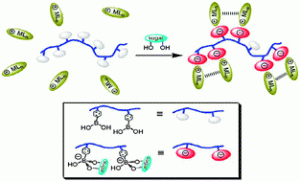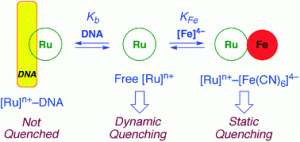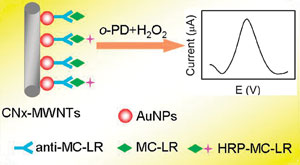Glycogen storage disease type II (GSD II), also known as Pompe disease, is a genetic disorder that results in muscle and nerve cell damage caused by deficiency of the lysosomal acid a-glucosidase enzyme. In an effort to achieve a better technique for screening enzyme activity in patients suffering from Pompe disease, Prof. Vivian Yam and colleagues at the Institute of Molecular Functional Materials, University of Hong Kong, have synthesised a two-component platinum (II) complex-polymer ensemble for glucose sensing and a-glucosidase assay.
The system works by strongly binding glucose, resulting in a 46-fold increase in the low energy emission band (800 nm) of the electronic emission spectrum. Additionally, in the presence of a-glucosidase and maltose (which is broken down to glucose by a-glucosidase), the intensity of the 800 nm emission band was found to increase with time. These results provide a “proof-of-principle” concept for label-free detection of glucose and open the way for rapid and sensitive detection of a-glucosidase.
To find out more download the ChemComm communication for free until 25th February 2011.




















